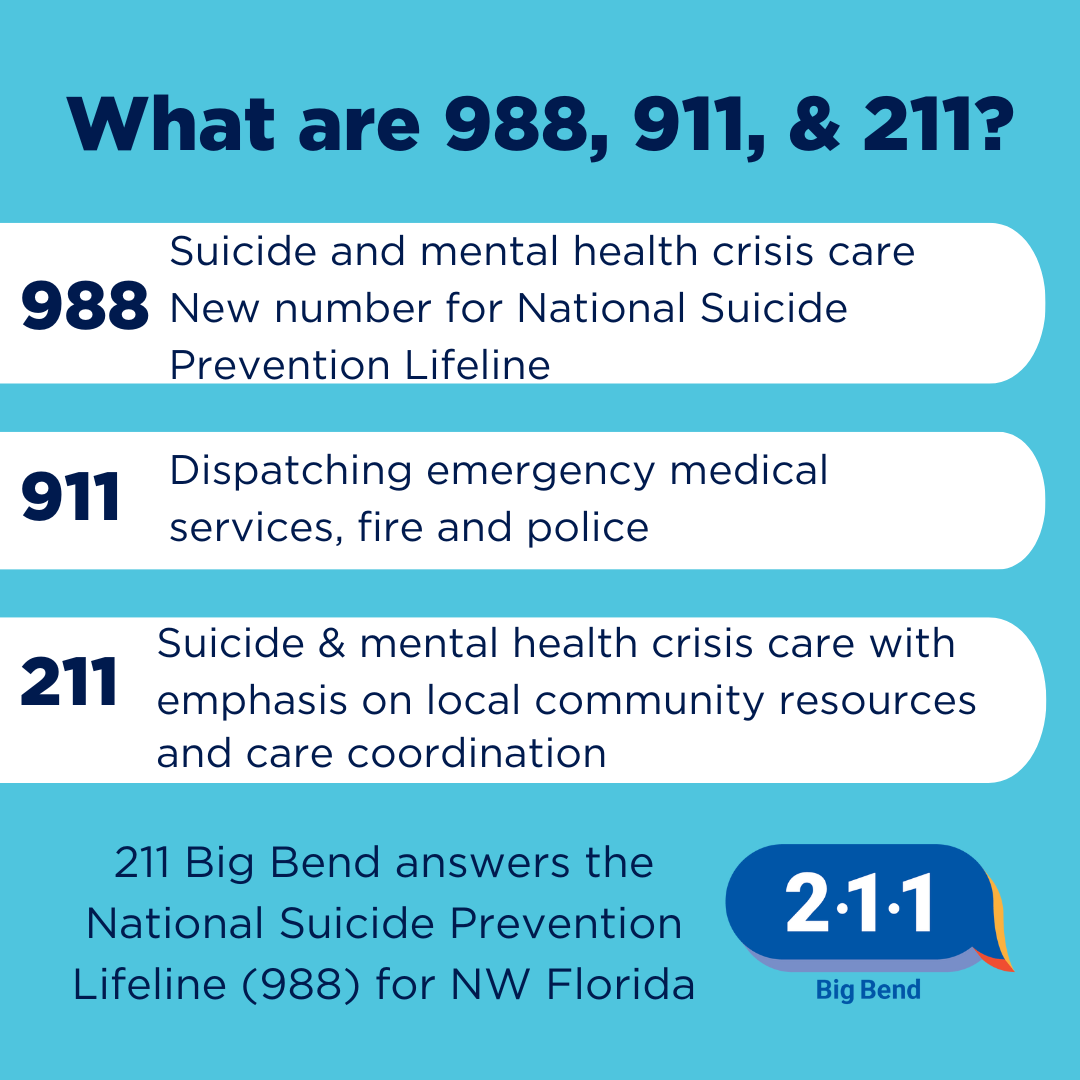988 launching as the new National Suicide Prevention Lifeline number for suicide prevention and mental health crisis in partnership with 211 Big Bend
Tallahassee, FL – In July 2020, the Federal Communications Commission (FCC) designated 988 as the new three-digit number for the National Suicide Prevention Lifeline (1-800-273-TALK). By July 16, 2022, all telecommunications companies will make needed changes so individuals can access the National Suicide Prevention Lifeline using the 988-dialing code. 988 is an easy to remember number that will not replace any of the functions of 911 or 211 but will focus on providing immediate support for those in emotional distress or suicide crisis. The volume of mental health and suicide crisis calls to 988 is expected to significantly increase with the implementation of this easy to remember number.
211 Big Bend has been a National Suicide Prevention Lifeline partner for many years by responding to these calls for 14 counties in Northwest Florida. 211 Big Bend will continue to answer Lifeline (988) suicide and mental health crisis calls as 988 expands. 211 crisis counselors are trained to assist people in emotional distress or suicide crisis regardless of whether they call 988 or 211. In addition to mental health crisis, 211 provides support for finding community resources, such as food pantries and basic needs assistance, as well as care coordination services.
The National Suicide Prevention Lifeline is a national network of approximately 180 local- and state-funded crisis centers including many 211 centers. Suicide prevention is a critical need. Suicide is the second-leading cause of death among young people and was responsible for more than 48,000 deaths in 2019, resulting in about one death every 11 minutes. According to data provided by Lifeline call centers, approximately 98% of answered Lifeline calls do not require an emergency response which can often be much more costly.
“A call to 211 or 988 provides immediate access to someone trained in crisis response, who can provide immediate support, and connection to resources. 211 Big Bend is pleased to be a Lifeline network crisis center and to work with key mental health partners in the local community including mobile response team units.” Tori Greer, 211 Big Bend.
To learn more about 211 Big Bend, please visit www.211bigbend.org. Call 2-1-1 or 850-617-6333 to be connected to 24/7 free confidential and local support, crisis and suicide prevention, and community resources.
If you are thinking about suicide or are worried about a friend or loved one, please reach out.
National Suicide Prevention Lifeline (1-800-273-8255).


